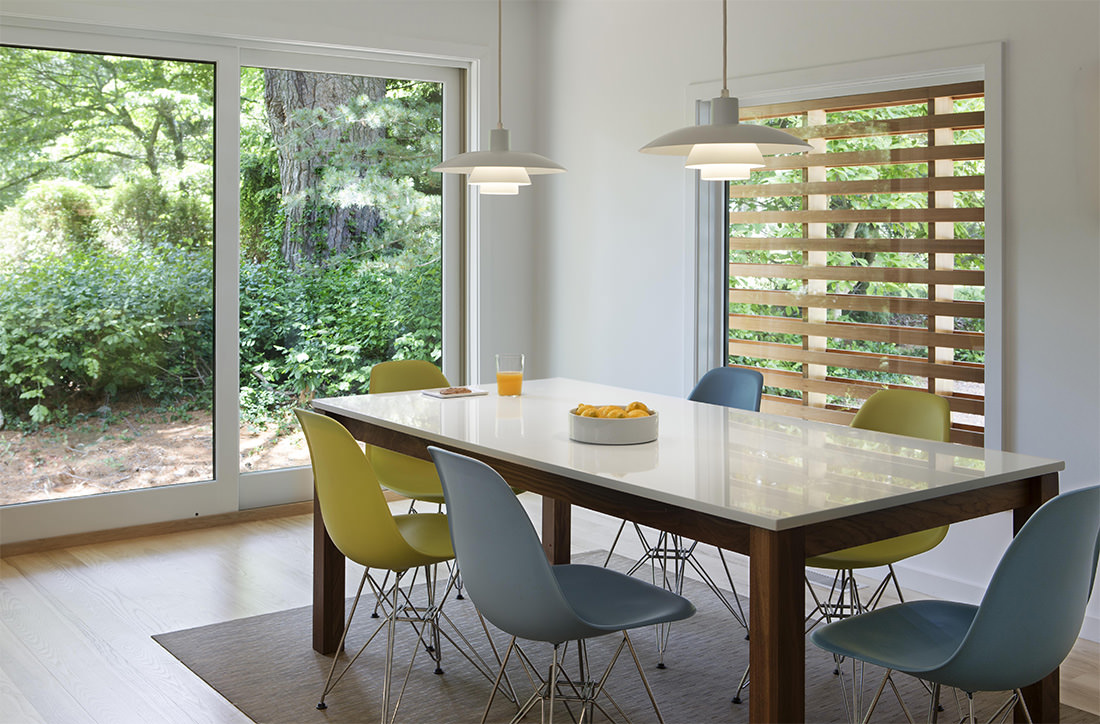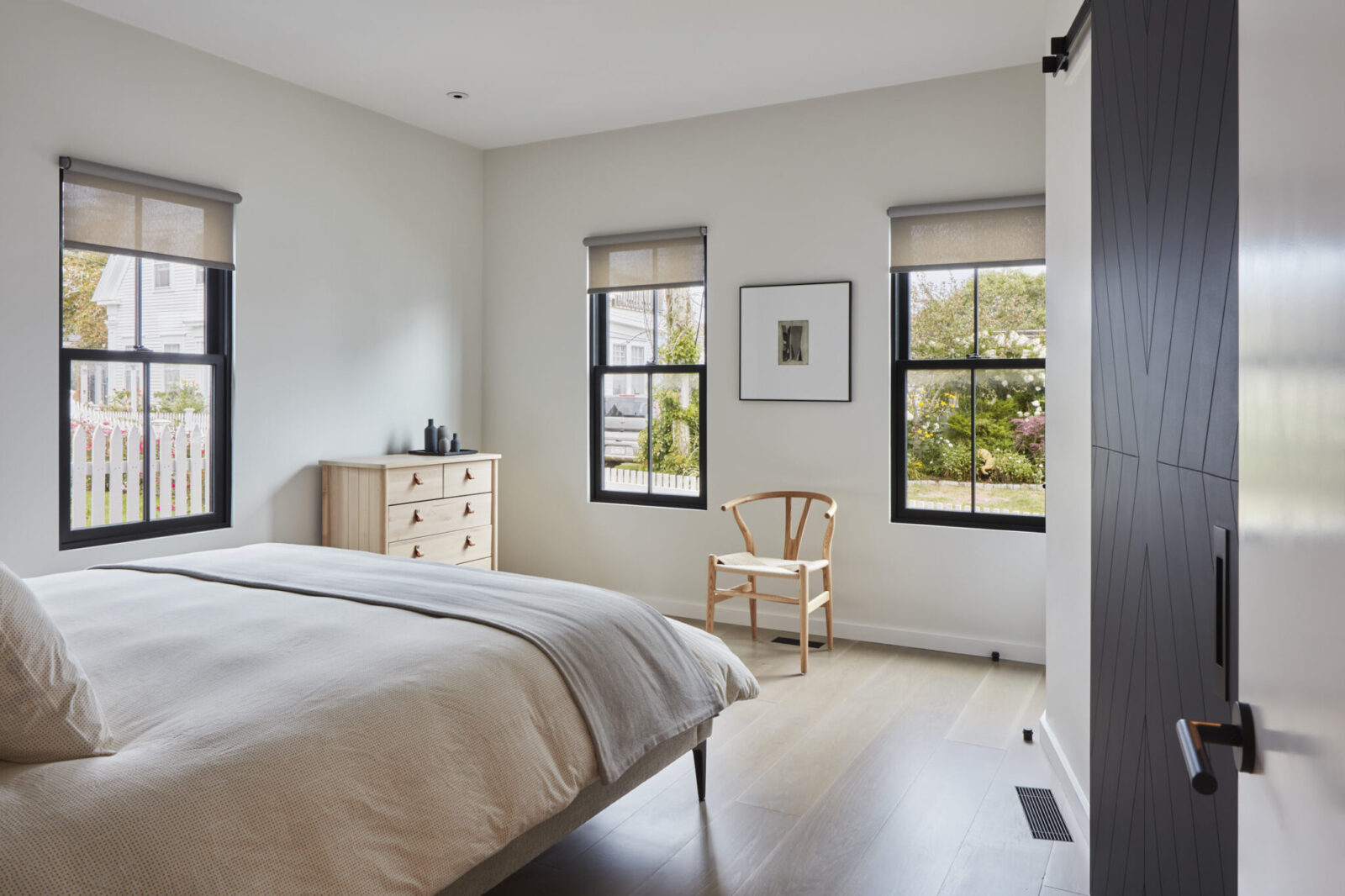
Slow Space: Why is Indoor Air Quality Important for Clean Buildings?
Our Slow Space blog series continues with an examination of the importance of indoor air quality and why clean buildings need fresh air.
Indoor Air Quality
We spend 90% of our time inside and the indoor air quality (IAQ) has a large impact on the health of building occupants. In most places, indoor air has a higher concentration of pollutants than outside air and the increased exposure to pollutants directly impacts our health and well-being.1
Common health problems from pollutant exposure include asthma, lung cancer, respiratory problems, headaches, central nervous system damage, dizziness, and more.2
Unhealthy indoor air quality is most commonly caused by:3
- Particulates: From fireplaces, stoves, mold and dust; results in eye, nose, and throat irritation, coronary and respiratory disease.4
- Carbon Monoxide: From fuels and burning gas; causes carbon monoxide poisoning.5
- Volatile Organic Compounds (VOCs): From paints, adhesives, sealants, solvents, finishes, blowing agents, household cleaners, furnishings; can cause eye, nose, and throat irritation, liver and kidney cancer, and damage to the central nervous system.6
- Semi-Volatile Organic Compounds (SVOCs): Found in plastics and epoxy resins; can be carcinogenic and endocrine disruptors.
- Formaldehyde: Found in insulation, resins, composite woods, preservatives, and household products; causes eye, nose, throat, and skin irritation, and cancer.7
- Carbon Dioxide: From kitchen appliances and fireplaces, causes headaches, dizziness and nausea.8
- Radon: Naturally occurring element, can cause respiratory issues and lung cancer.9
- Temperature and Humidity: Need to be controlled to prevent mold, moisture build up, and odors.10
In order to mitigate harmful off-gassing and maintain healthy indoor air quality it is important to define strict standards, carefully vet materials, provide adequate ventilation, and test and monitor.

Opening the windows is an easy way to get clean, fresh air. Photo: Jane Messinger
Passive Ventilation
We believe that a building should breathe. Opening the windows is one of the most effective ways to improve indoor air quality, by flushing out the air and removing idle contaminants.11 It also has the benefit of connecting you to nature, thereby improving your health and your mood.
We install operable windows in all occupied spaces to give people individual control over airflow, temperature, and humidity. This low- tech solution is simple, affordable, and has worked for hundreds of years.
Passive ventilation like this is critical because it can work in any condition, even when mechanical ventilation does not, like during a power outage.
We believe that a building should breathe.
In most places, outside air is much cleaner than the air inside your home. Take advantage of your windows and get some fresh air by opening them periodically.
The exception is in cities like Los Angeles and Hong Kong that have notoriously bad air quality. In these situations, people often need to rely on the quality of their mechanical system, however this can be supplemented by maintaining clean ductwork, changing filters, or utilizing an indoor air filter.
Mechanical Ventilation
Buildings should have robust mechanical ventilation systems with fresh air intakes. Mechanical ventilation filters out harmful particulates and VOCs. We recommend a filter with a Minimum Efficiency Reporting Value (MERV) of 13, though a High Efficiency Particulate Air (HEPA) filter is preferred, as it is able to comb through even smaller particles.12

Smog in Hong Kong, Photo: Andrea Piacquadio
Mechanical ventilation also provides air changes. Air changes are how frequently the air in the house is removed from a space.13 Stale air can cause health issues like nausea and respiratory problems, and is commonly referred to as Sick Building Syndrome.14 In areas where outdoor air quality may be poor, these mechanical systems can provide a substitute for fresh air.
Energy Recovery Ventilators (ERVs), which take fresh air from the outside and heats or cools it from the energy recovered from the exhausted air, are another example of efficient mechanical solutions for fresh air intakes.
Certain mechanical systems can also exhaust harmful emissions that make their way into your home, called re-entrainment.15 Specifying electric systems, such as electric heat pumps, ERVs, and appliances, eliminates fuel burning emissions.
Some mechanical systems themselves can actually cause IAQ problems as well, from trapped dust in ductwork, microbiological growth in drip pans and coils, improper venting or sealant, and refrigerant leakage.16
This makes it even more important to choose the proper mechanical system, so that the equipment you have in your home is not contributing to poor indoor air quality.

Exterior Window Detail by Aamodt / Plumb. Photo: Casey Dunn.
Covid-19
With air-borne viruses like Covid-19 there is an even greater need for outside air ventilation and proper filtration. Opening the windows is the easiest and most effective method of cleaning and dispersing air.
The EPA has additional recommendations for virus mitigation that align with our IAQ standards:17
- Increase fresh air intake from outside to remove pollutants and help circulate air.
- Increase overall ventilation, including running fans and increasing air changes.
- Use MERV or HEPA filters in your HVAC system and change them regularly.
- Portable air cleaners or filters can augment your existing system.
Finally, while the EPA warns that evaporative coolers and house fans are not standalone solutions, they significantly reduce the transmission of Covid-19 by cooling and filtering the air. They are a good solution to air circulation if no other options are viable.
Read the other articles in our SLOW SPACE Series:
SLOW SPACE: CLEAN BUILDING MATERIAL SELECTION
SLOW SPACE: CLEAN BUILDINGS FOR BETTER HEALTH AND WELLBEING
SLOW SPACE: GOOD DESIGN PRINCIPLES
SLOW SPACE: WHAT MAKES A GOOD BUILDING?
SLOW SPACE: GOOD, CLEAN AND FAIR ARCHITECTURE AND CONSTRUCTION
Endnotes:
1 World Health Organization, “Household air pollution and health,” 2018.
2 Environmental Protection Agency, “Interactive Tour of the Indoor Air Quality Demo House,”
2019.
3 EPA, “Introduction to Indoor Air Quality,” 2020
4 EPA, “Improving Indoor Air Quality,” 2020.
5 EPA, “Indoor Air Quality (IAQ): Air Cleaners and Air Filters in the Home,” 2019.
6 ASHRAE, “ASHRAE Standard: Ventilation for Indoor Air Quality,” 2003.
7 EPA, “Indoor Air Facts No. 4: Sick Building Syndrome,” 1991.
8 EPA, “Factors Affecting Indoor Air Quality,” 2014.
9 EPA, “Factors Affecting Indoor Air Quality” 2014
10 EPA, “Indoor Particulate Matter,” 2020.
11 National Center for Environmental Health, “Carbon Monoxide Poisoning,” CDC: 2020.
12 EPA, “Volatile Organic Compounds’ Impact on Indoor Air Quality,” 2017.
13 EPA, “Facts About Formaldehyde,” 2020.
14 Michael G. Apte, William J, Fisk, Joan M. Daisey, “Associations Between Indoor CO2
Concentrations and Sick Building Syndrome Symptoms in U.S. Office Buildings,”
Munksgaard Journals: 2000.
15 EPA, “Radon,” 2020.
16 EPA, “Care for Your Air: A Guide to Indoor Air Quality,” 2019.
17 EPA, “Indoor Air in Homes and Coronavirus (Covid-19),” 2020.




